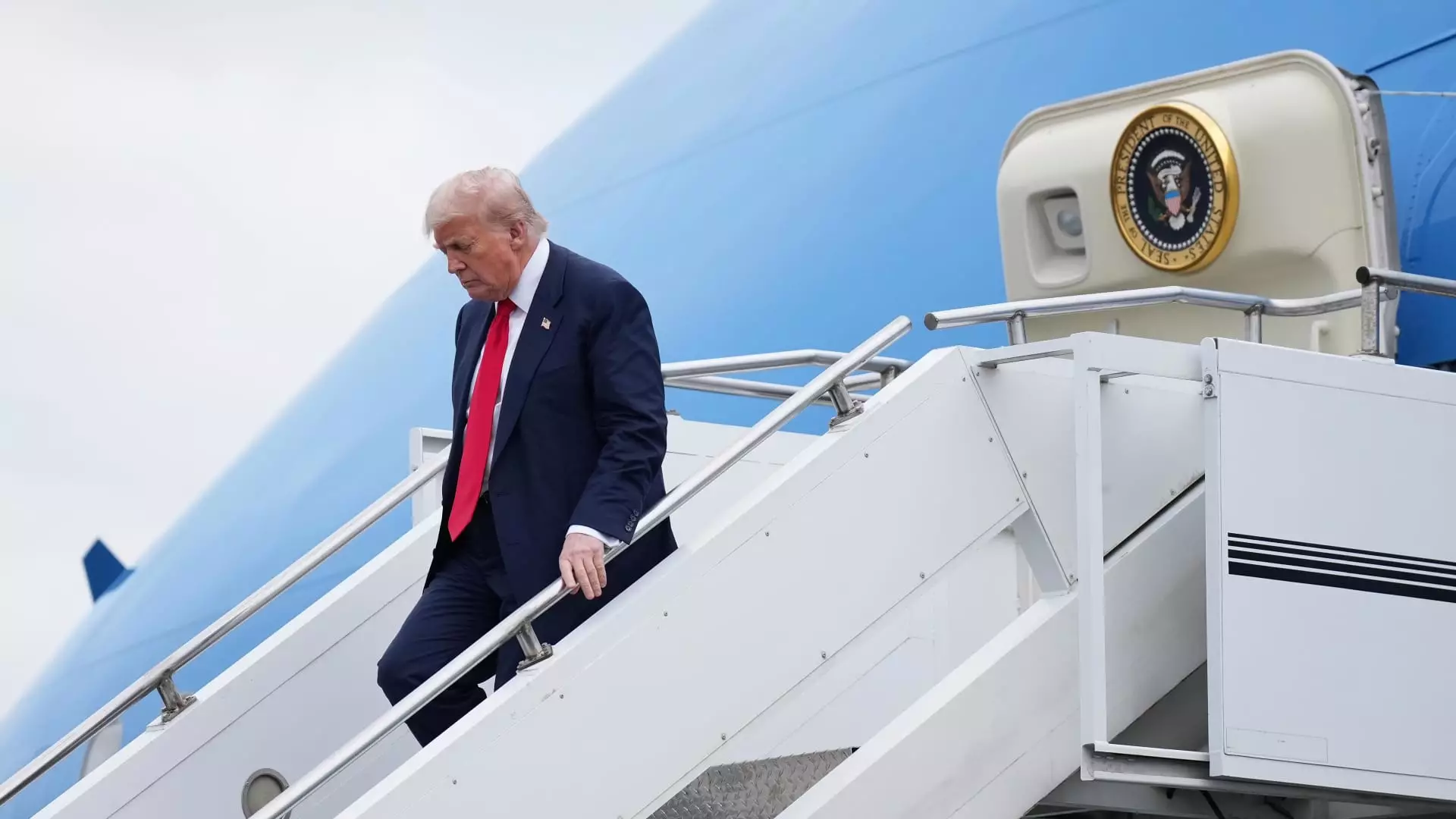This upcoming meeting between Ursula von der Leyen and Donald Trump is being portrayed as a pivotal moment for transatlantic trade relations. However, beneath the surface of optimism lies a complex web of strategic interests, political posturing, and economic uncertainty. While both sides have a vested interest in averting a full-blown trade war, the reality is that the negotiations are fraught with contradictions that threaten to unravel any fragile consensus. Media narratives and optimistic forecasts tend to gloss over the deep-rooted adversarial dynamics that characterize U.S.-EU economic diplomacy today.
The EU’s efforts to engage Trump reflect a desperate attempt to safeguard its economic interests amid mounting pressures. Mention of a potential 15% tariff, contrasted with Trump’s earlier threat of up to 30%, exemplifies how negotiations often settle at diplomatic midway points—yet these compromises rarely translate into genuine economic harmony. Instead, they serve as temporary bandages on festering wounds caused by ongoing trade disputes that have, over time, chipped away at trust and cooperation. A simple meeting, no matter how high-profile, cannot mask the fundamental issues of sovereignty, economic divergence, and geopolitical rivalry shaping this relationship.
The Reality of an Uncertain Deal: Why Hope Might Be Overrated
Despite the seemingly positive signs—such as the recent U.S.-Japan agreement—the likelihood of an inclusive, fair trade arrangement between the EU and U.S. remains slim. The analogy often drawn between the U.S.-Japan framework and a potential EU deal is misleading. While Japan’s accord sets a baseline tariff of 15%, the EU faces a unique challenge: a broad and deeply integrated internal market with diverse economic interests and political sensitivities. The EU’s internal cohesion and its regulatory standards act as both a strength and a barrier in these negotiations, complicating the prospects for a quick agreement.
Moreover, the political landscape within both blocs is anything but conducive to a comprehensive deal. EU member states have differing priorities and sensitivities, making consensus on tariff reductions or regulatory alignments difficult. Meanwhile, Trump’s unpredictable approach to trade policy—shaped by domestic political pressures and his ideological stance against multilateral agreements—adds a layer of volatility. The narrative of “a good 50/50 chance” of reaching an agreement glosses over the intricate negotiations, strategic misalignments, and potential for diplomatic setbacks that could derail the process altogether.
Economic Disruption or Political Theatre? The True Cost of Short-Term Negotiations
The looming tariffs—whether 15% or 30%—do not merely represent numbers on a spreadsheet. They symbolize the broader uncertainties and risks to the global economy. When the EU considers countermeasures and the U.S. threatens tariffs, the potential for a damaging trade war increases. Such a confrontation could disrupt global supply chains, inflate consumer prices, and hamper economic growth. However, the most insidious risk lies in the erosion of international cooperation, undermining decades of efforts to establish rule-based economic interactions.
From a strategic perspective, the Trump administration’s maneuvering appears designed to extract concessions or demonstrate dominance rather than foster genuine trade liberalization. On the other side, the EU’s readiness to consider retaliatory measures signals a recognition of its own leverage, yet also reveals an undercurrent of mistrust and defensive posture. The intensive focus on tariff rates and deal terms overshadows the deeper issues—regulatory divergence, geopolitical ambitions, and the future of multilateral trade governance—that no short-term agreement can resolve.
This upcoming summit is less a sign of impending harmony and more a theatrical display of diplomatic brinkmanship. While the EU and U.S. desperately seek to avoid the economic fallout of a trade war, their methods often resemble a high-stakes poker game—where bluffing, misdirection, and fleeting concessions dominate the table. The optimistic framing masks the underlying reality: that true cooperation requires more than meeting room diplomacy and superficial tariffs negotiations. It demands a shared vision, mutual trust, and a willingness to confront fundamental disagreements—elements that are conspicuously absent amidst political pressures and nationalist tendencies.
Ultimately, the prospects of a meaningful, durable transatlantic trade deal are slim unless policymakers are willing to move beyond transactional bargaining. Instead, they need to focus on strategic cooperation rooted in shared values and long-term stability. Until then, the risk remains that these negotiations are just another chapter in a broader saga of economic discord—one that could have far-reaching implications far beyond the immediate tariffs and trade agreements being debated in Scotland.


Leave a Reply